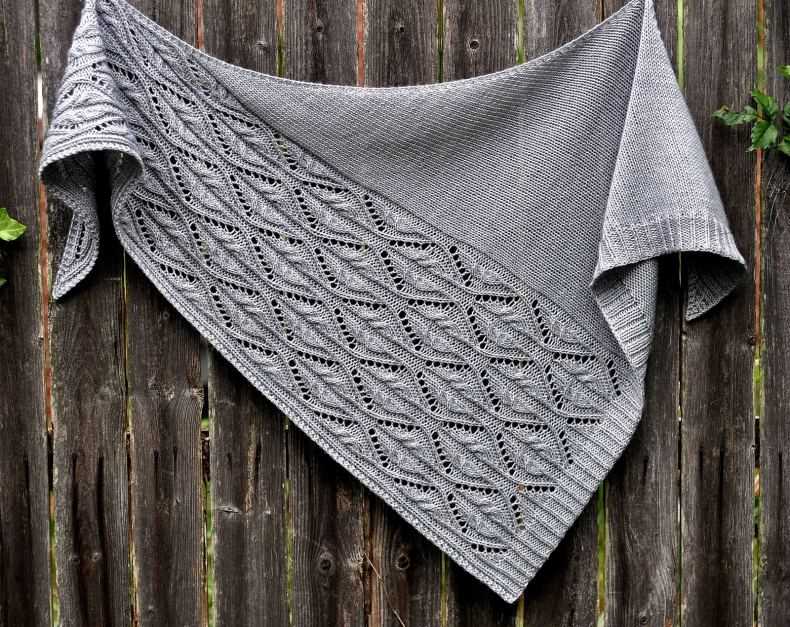
If you’re looking for a beautiful and versatile knitting project, look no further than a leaf shawl. These delicate and intricate shawls are perfect for adding a touch of elegance to any outfit, and they make for a wonderful handmade gift.
Knitting a leaf shawl may seem intimidating, but with the right pattern and some basic knitting skills, you’ll be able to create a stunning accessory that you’ll be proud to wear or give away. Whether you’re a seasoned knitter or a beginner, there are leaf shawl patterns available for every skill level.
The beauty of a leaf shawl lies in its intricate stitch pattern that mimics the delicate veins of a leaf. You can choose from a variety of leaf designs, such as maple, oak, or fern, and customize your shawl with different colors and yarn weights to suit your personal style.
In this article, we will explore different leaf shawl knitting patterns, from simple and beginner-friendly designs to more advanced lace and cable patterns. We’ll also provide tips and tricks to help you along the way, so you can create a beautiful leaf shawl that is uniquely yours.
So grab your knitting needles and get ready to embark on a creative journey as we dive into the world of leaf shawl knitting! Whether you’re knitting for yourself or someone else, a leaf shawl is sure to be a fashionable and timeless addition to your wardrobe.
Leaf Shawl Knitting Pattern
Knitting a leaf shawl is a beautiful and intricate project that requires attention to detail and a love for nature-inspired patterns. This pattern is perfect for those who enjoy working with lace and want to create a stunning accessory that can be worn year-round. The leaf motif adds a touch of elegance and charm to any outfit, making it a versatile and timeless piece.
The leaf shawl knitting pattern typically involves using lace-weight yarn and delicate knitting needles to create a light and airy fabric. The pattern usually starts with a garter-stitch border, followed by a series of leaf motifs that are repeated throughout the shawl. The leaves are created using a combination of yarnovers, decreases, and simple lace stitches to form the intricate and realistic leaf shape.
To knit a leaf shawl, you will need to have some experience with lace knitting techniques such as yarnovers, decreases, and following lace charts. It is also helpful to have a good understanding of basic knitting stitches and techniques. The pattern will provide instructions on how to create the leaf motifs, as well as how to shape the shawl and finish it off with a decorative edging.
Once completed, the leaf shawl can be worn in various ways – draped over the shoulders as a traditional shawl, wrapped around the neck as a scarf, or even used as a decorative throw. The delicate lacework and intricate leaf pattern make it a truly stunning accessory that is sure to attract attention and admiration.
About Leaf Shawls
The leaf shawl is a popular knitting pattern that incorporates intricate leaf motifs into a beautiful and functional accessory. These shawls are perfect for adding a touch of elegance to any outfit, whether it’s a casual day at the office or a special occasion. The leaf motif adds a natural and whimsical element to the shawl, making it a unique and eye-catching piece.
Leaf shawls can be knit in a variety of yarns, allowing knitters to customize the shawl to their preferences. Fine yarns create a delicate and lightweight shawl, perfect for warmer weather or for adding a touch of elegance to an evening outfit. Heavier yarns, on the other hand, create a cozy and warm shawl that can be worn during colder months. The versatility of the leaf shawl pattern allows knitters to create a shawl that suits their style and climate.
Leaf Motif
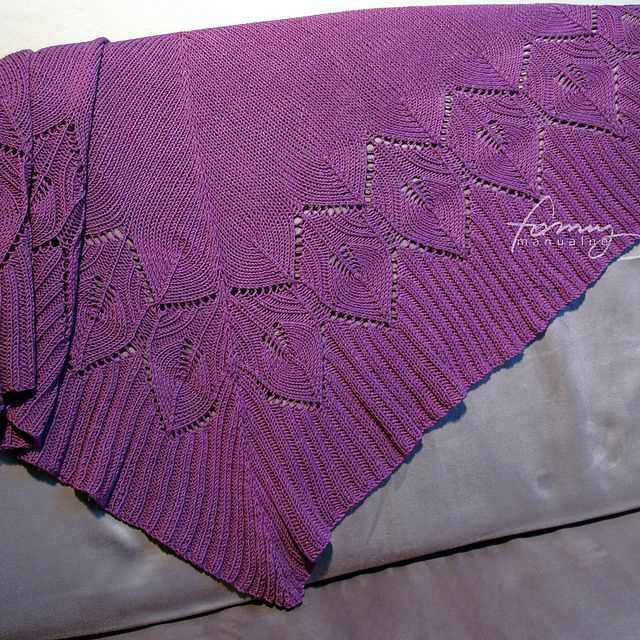
The leaf motif is the defining feature of the leaf shawl knitting pattern. Knitted in lace or cable stitches, the leaf motif can be as intricate or simple as desired. Some patterns feature single leaves scattered across the shawl, while others have a more dense arrangement for a more dramatic effect. The leaf motif can be knit in a contrasting color to make it stand out, or in the same color as the rest of the shawl for a more subtle appearance.
Construction
The construction of a leaf shawl can vary depending on the pattern, but most commonly they are knit from the center outwards or from one edge to the other. The central panel is often shaped like a leaf or a diamond, and the shawl is then expanded by adding stitches along the edges to create the desired width. This construction method allows for customization in terms of size and shape, ensuring the shawl fits perfectly.
Styling
A leaf shawl can be styled in a variety of ways, making it a versatile accessory. It can be draped over the shoulders for a classic shawl look, wrapped and secured around the neck like a scarf for extra warmth, or even used as a headscarf or turban for a unique and stylish twist. The options are endless, and the leaf motif adds a touch of elegance to any styling choice.
Conclusion
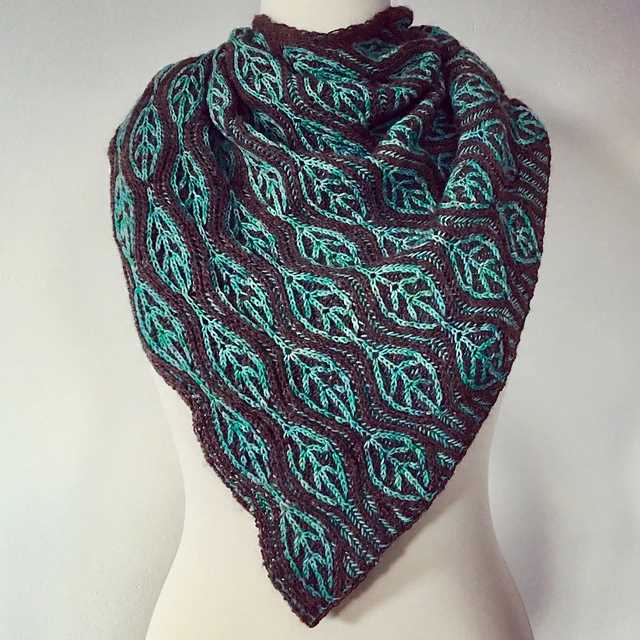
The leaf shawl knitting pattern is a popular choice for knitters looking to create a beautiful and versatile accessory. The intricate leaf motif, customizable construction, and variety of styling options make leaf shawls an appealing project for knitters of all skill levels. Whether you’re knitting a leaf shawl for yourself or as a gift for a loved one, it is sure to be a cherished and admired item.
Choosing the Right Yarn for Your Leaf Shawl
When knitting a leaf shawl, one of the most important decisions you’ll make is choosing the right yarn. The yarn you select will determine the overall look and feel of the finished shawl, as well as its drape and warmth. Considering the various factors involved in choosing the perfect yarn will help ensure your leaf shawl turns out exactly as desired.
Fiber Content: The first consideration when choosing yarn for your leaf shawl is the fiber content. Different fibers have different characteristics and will result in different finished results. For a lightweight and airy shawl, consider using a yarn with a high percentage of plant-based fibers such as cotton or linen. If you’re looking for warmth and drape, opt for natural animal fibers like wool or alpaca. The right fiber content will depend on the season and climate in which you plan to wear the shawl.
- Weight: Another important factor to consider when choosing yarn for your leaf shawl is the weight or thickness of the yarn. The pattern you’re using may specify a particular weight of yarn, or you may have a personal preference for a certain thickness. Thicker yarns will create a chunkier shawl with more warmth, while lighter weight yarns will result in a more delicate and lightweight shawl.
- Color: The color of the yarn is also an important consideration for your leaf shawl. Consider the overall aesthetic you’re aiming for. Do you want a bold and vibrant shawl, or do you prefer a more understated and neutral look? Keep in mind that the leaf pattern will stand out more on solid or lightly variegated yarns, while highly variegated or speckled yarns may detract from the leaf design.
Texture: Lastly, consider the texture of the yarn when choosing for your leaf shawl. Smooth and tightly spun yarns will give your shawl a more defined stitch definition, making the leaf pattern pop. Loosely spun yarns, on the other hand, will create a softer and more textured shawl. Consider the desired drape and texture for your project and choose a yarn accordingly.
By carefully considering the fiber content, weight, color, and texture of the yarn, you can ensure that your leaf shawl turns out exactly as you envision. Don’t be afraid to experiment with different yarns until you find the perfect match for your leaf shawl pattern!
Needles and Stitch Techniques for Leaf Shawl Knitting
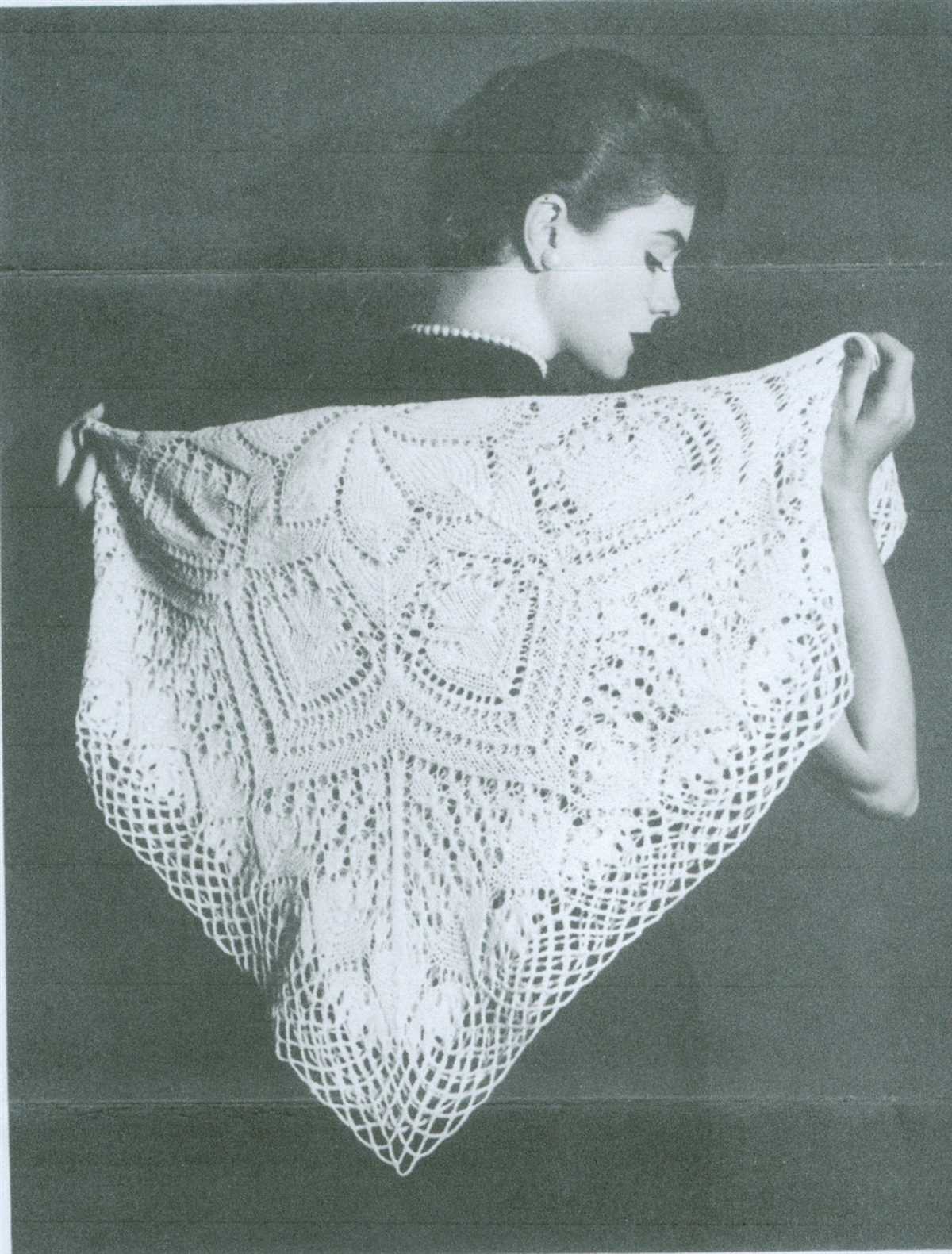
When it comes to knitting a leaf shawl, choosing the right needles and mastering the stitch techniques are crucial for achieving the desired result. The right tools and techniques can make the knitting process smoother and help create a beautiful and intricate leaf pattern.
Needles: The choice of needles depends on personal preference and the yarn weight used for the leaf shawl. Circular needles are commonly used for shawl knitting as they can hold a large number of stitches and provide flexibility. Generally, a size 8 or 9 circular needle is a good starting point, but it can be adjusted based on the desired gauge and fabric drape.
Stitch Techniques: One of the main stitch techniques used in leaf shawl knitting is the lace stitch. Lace stitches create the delicate and openwork patterns that resemble leaves. It involves yarn overs, decreases, and intricate stitch combinations that form the desired leaf motif. It’s important to pay attention to the pattern instructions and charts to execute the stitches correctly and achieve the desired shape and texture.
In addition to lace stitches, other techniques such as cables, twisted stitches, and slipped stitches can also be incorporated to add more texture and interest to the leaf shawl. These techniques require specific manipulations of the stitches and may require a bit of practice to master.
Overall, knitting a leaf shawl requires a combination of the right tools and stitch techniques to create a stunning and intricate piece. With the right needles and a good understanding of the stitch techniques involved, you’ll be able to successfully knit a beautiful leaf shawl that showcases the beauty of nature in your handcrafted creation.
Getting Started: Casting On and Beginning the Leaf Pattern
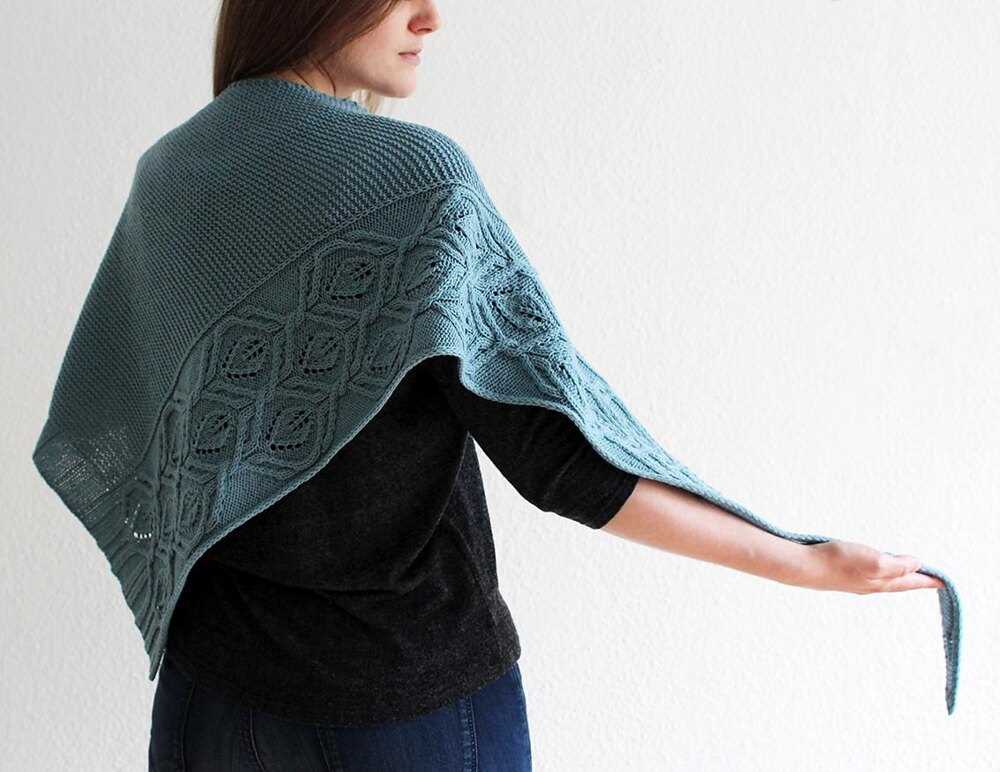
When starting your leaf shawl knitting project, the first step is to cast on your stitches. The number of stitches you cast on will depend on the desired width of your shawl. To keep track of the number of stitches, you can use a stitch marker or a piece of contrasting yarn to mark the beginning of each row.
Once you have cast on your stitches, you can begin working the leaf pattern. The leaf pattern consists of a combination of knit and purl stitches that create the intricate leaf design. To start the pattern, you will typically work a set number of rows in the main stitch pattern before beginning the leaf motif.
The leaf motif is usually a series of increases and decreases that create the shape of the leaf. These increases and decreases are often worked on the right side rows of the pattern. The pattern may specify the type of increase and decrease to use, such as yarn overs and knit two together. It is important to read and follow the pattern instructions carefully to correctly create the leaf motif.
As you work the leaf pattern, be sure to check your stitch count regularly to make sure you have not accidentally added or subtracted stitches. It is also helpful to use stitch markers to mark the beginning and end of the leaf motif section, as this will help you keep track of your progress and ensure that your leaf design is symmetrical.
Once you have completed the leaf motif section, you can continue working the main stitch pattern until you have reached the desired length for your shawl. The leaf motif can be repeated multiple times, depending on the width of the shawl and the desired overall design. When finishing your project, bind off your stitches and weave in any loose ends to give your leaf shawl a polished and professional look.
Knitting the Body of the Leaf Shawl
Once you have completed the leaf motif section of the shawl, it’s time to move on to knitting the body. This is where the shawl really starts to take shape and the pattern begins to repeat.
To start the body section, you will need to cast on the required number of stitches. This will depend on the size of shawl you are knitting and the desired width. You can refer to the pattern for the specific instructions on how many stitches to cast on.
Once you have cast on, you will begin working rows of the pattern stitch. The body of the shawl typically consists of a simple repeating pattern that complements the leaf motif. This could be a lace stitch, a textured stitch, or a combination of different stitches.
Throughout the body section, you will need to keep track of the pattern repeat and any shaping instructions. This may include increases or decreases to create a certain shape or to maintain the desired width of the shawl.
As you knit the body of the shawl, you will notice it growing in size and becoming more substantial. It’s important to maintain an even tension and to check your gauge periodically to ensure that the shawl is coming out as intended.
Once you have completed the required number of rows for the body section, you will be ready to move on to the next section of the shawl. This could be the border or another motif, depending on the pattern you are following.
- Make sure to read and follow the pattern instructions carefully
- Take your time and enjoy the process of knitting the body of the shawl
- Don’t hesitate to reach out for help if you encounter any difficulties or have questions
Adding Additional Leaf Sections
Whether you want to make your leaf shawl bigger or add more intricate leaf patterns, adding additional leaf sections to your knitting project can enhance its beauty and uniqueness. Here are some tips and guidelines to help you with this process.
1. Planning and Design
Before you start adding more leaf sections, it is essential to plan the overall design and layout of your shawl. Consider the desired size, placement, and number of additional leaf sections you want to incorporate. Sketching out a rough design can help you visualize how the new sections will fit into the existing pattern.
2. Extended Leaf Chart
To add more leaf sections, you will need an extended leaf chart that includes the additional rows and stitches. You can either modify the existing leaf chart or create a new one. Make sure to clearly mark the added rows and stitches to avoid any confusion during the knitting process.
3. Stitch Count and Gauge
Ensure that the stitch count and gauge of the additional leaf sections match the existing ones to maintain consistency in your shawl. Adjustments may be necessary to make the new sections blend seamlessly with the rest of the pattern. Swatching and measuring your gauge can help you achieve the desired results.
4. Transition Rows
When transitioning from one leaf section to another, it is important to include transition rows that gradually merge the patterns together. Consider using simple stitches like garter stitch or stockinette stitch in these transition rows to create a smooth and seamless flow between the sections.
Remember to always keep track of your stitch counts and row numbers to ensure accuracy and symmetry when adding additional leaf sections. By carefully planning and executing these sections, you can create a stunning leaf shawl that showcases your knitting skills and artistic vision.
Creating a Border for Your Leaf Shawl
Once you have completed knitting the main body of your leaf shawl, it’s time to add a border to give it a finished look. The border not only provides a decorative element but also helps to stabilize the edges of the shawl. Here are a few steps to guide you in creating the perfect border for your leaf shawl.
Choosing the Right Border Pattern:
Start by selecting a border pattern that complements the leaf motif of your shawl. There are numerous options available, ranging from simple ribbing to intricate lace designs. Consider the overall style and design of your shawl when choosing the border pattern, making sure it enhances the leaf motif and blends in seamlessly.
Calculating the Number of Stitches:
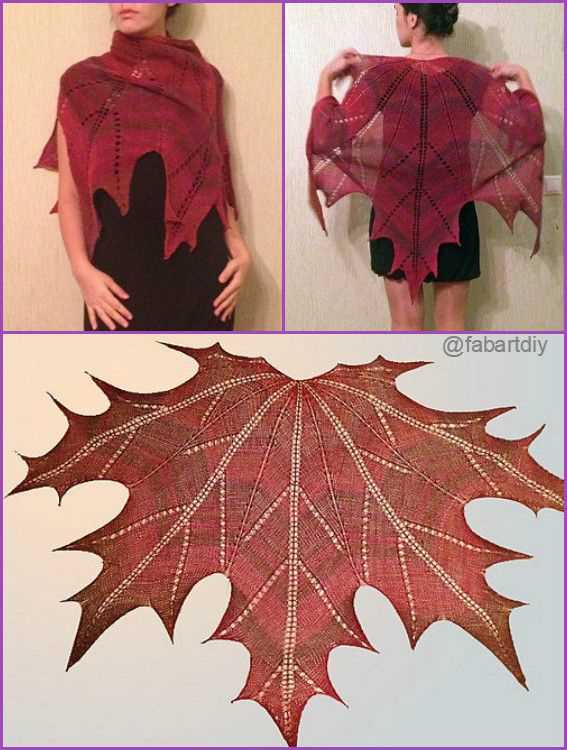
Before you begin knitting the border, you’ll need to calculate the number of stitches required. Measure the length of your shawl’s edge and multiply it by the stitch gauge to determine the total number of stitches needed. It’s important to ensure that the number of stitches is divisible by the pattern repeat of your chosen border pattern, to maintain a consistent and balanced look.
Starting the Border:
Once you have determined the number of stitches, cast on the required amount and join in the round, if knitting a circular border. If knitting a border that is worked back and forth, join the first row in the same direction as the main body of the shawl. Follow the instructions of your chosen border pattern to begin knitting the first row and establish the border’s design.
Finishing the Border:
Continue knitting the border pattern until you reach the desired width or length. Pay attention to the instructions provided and make sure to maintain the pattern repeat consistently. Once the border is complete, bind off the stitches following the desired method, making sure to keep the edges elastic and even. Weave in any loose ends and block the shawl to give it a polished and professional finish.
Adding a border to your leaf shawl can help elevate its overall look and create a stunning final product. Whether you opt for a simple or intricate design, following these steps will ensure a seamless and harmonious finish to your leaf shawl.
Finishing Touches: Binding Off and Blocking Your Leaf Shawl
Once you have completed knitting your leaf shawl, it’s time to finish it off and give it that polished look. The final steps in the process are binding off and blocking.
First, you’ll need to bind off your stitches to secure them and prevent any unraveling. To bind off, simply knit two stitches, then use your left-hand needle to lift the first stitch over the second stitch and off the right-hand needle. Repeat this process until you have only one stitch left on your right-hand needle, then cut the yarn, leaving a tail long enough to weave in later.
Next, it’s time to block your leaf shawl. Blocking is an essential step in the knitting process that helps even out stitches and shape your finished project. To block your shawl, you’ll need to soak it in lukewarm water with a gentle wool wash or mild detergent for about 15 minutes. Gently squeeze out the excess water, being careful not to wring or twist the shawl, and lay it flat on a clean towel or blocking mats.
Using rust-proof T-pins, gently stretch and pin your shawl into shape, making sure to pull the edges and corners to create a crisp, defined shape. Pay special attention to the leaf motifs, ensuring they are well-defined and symmetrical. Allow your shawl to dry completely, which can take anywhere from a few hours to a day or two, depending on the climate and humidity.
Once your shawl is dry, carefully remove the T-pins and admire your finished leaf shawl. Don’t forget to weave in any loose ends from the bind off and blocking process for a neat, professional finish. Your leaf shawl is now ready to be worn or gifted, showcasing your knitting skills and the beauty of nature-inspired design.
Leaf Shawl Styling and Accessories
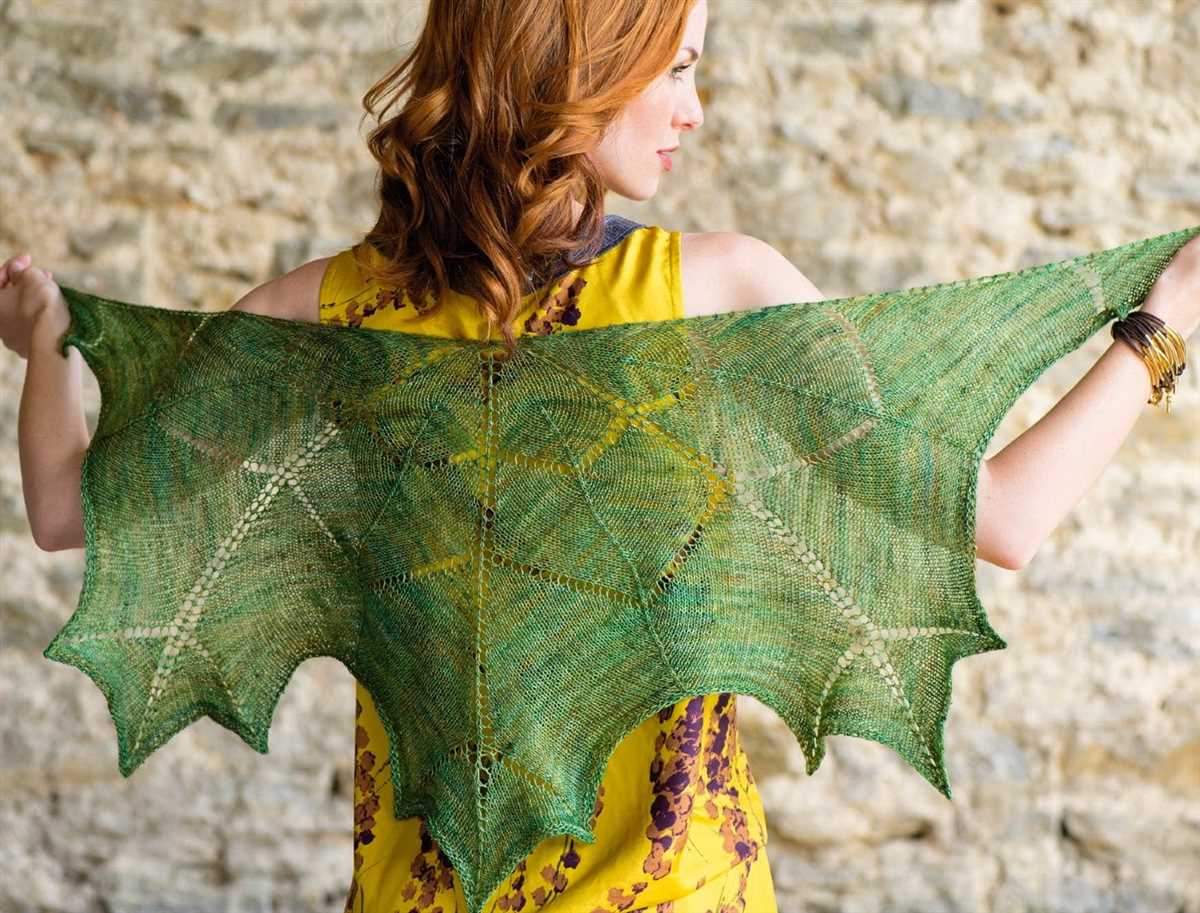
When styling your leaf shawl, it’s important to focus on enhancing its natural beauty and showcasing the intricate leaf pattern. Here are some tips for styling your leaf shawl and accessorizing it:
1. Simple and Elegant
The leaf shawl is a statement piece on its own, so it’s best to keep the rest of your outfit simple and let the shawl take center stage. Opt for a neutral-colored dress or blouse to allow the vibrant colors of the shawl to pop. Avoid busy patterns or bold accessories that may overpower the delicate design of the leaves.
2. Belt it Up
For a more structured and tailored look, try belting your leaf shawl. This will not only define your waist but also give the shawl a different shape and dimension. Choose a slim belt in a complementary color to your shawl, and loop it around your waist, securing it with a knot or a buckle. This will add a touch of sophistication to your overall outfit.
3. Layer it Right
If you’re looking to add more warmth and depth to your outfit, layer your leaf shawl with other clothing items. Wear it over a lightweight sweater or long-sleeved top for a cozy and stylish look. You can also experiment with different textures by pairing the shawl with a leather jacket or a knit cardigan. Play around with different layering options to find what works best for you.
4. Accessorize with Nature-Inspired Jewelry
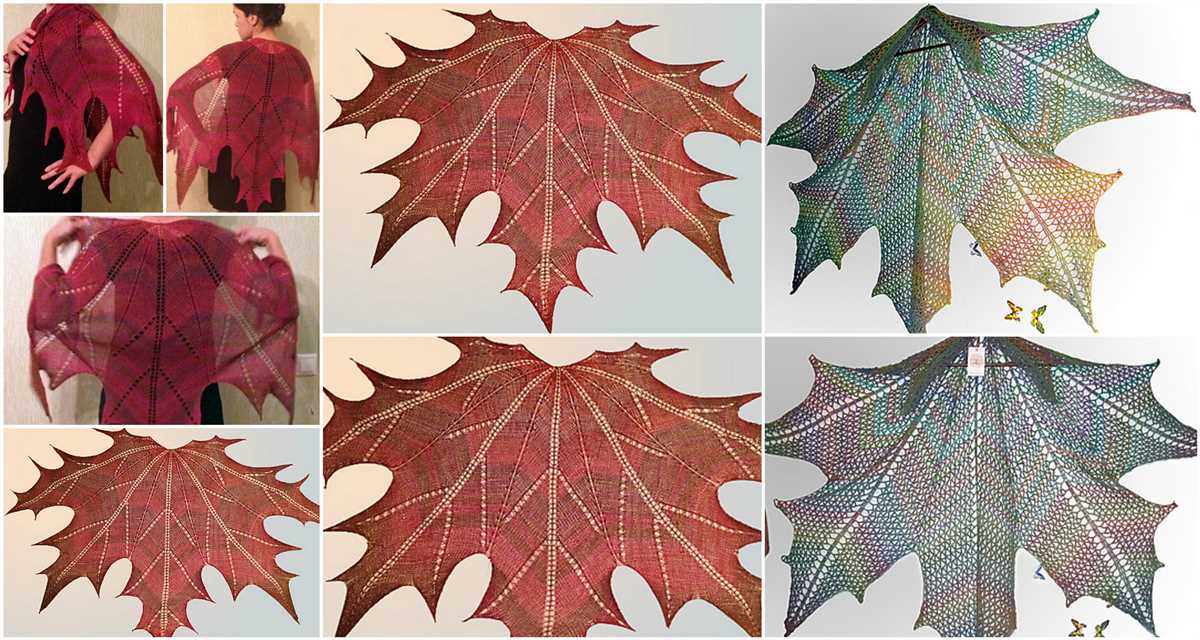
To complement the leaf motif of your shawl, consider accessorizing with nature-inspired jewelry. Opt for delicate pieces such as leaf-shaped earrings, a dainty necklace with a pendant resembling a leaf, or a bracelet featuring nature-inspired designs. This will tie in with the theme of your shawl and create a cohesive and polished look.
5. Play with Scarf Knots
There are numerous ways to tie and knot your leaf shawl to achieve different looks. Experiment with various scarf knots, such as the loop knot, the bow knot, or the waterfall knot. Each knot will give your shawl a unique shape and drape, allowing you to showcase different aspects of the leaf pattern. Don’t be afraid to get creative and try different knotting techniques to find your favorite style.
Remember, the key to styling your leaf shawl is to let its beauty shine through. Keep your outfit simple and elegant, and accessorize thoughtfully to enhance the leaf motif. With the right styling, your leaf shawl will become a versatile and stunning addition to your wardrobe.
Leaf Shawl Inspiration: Project Ideas and Customizations
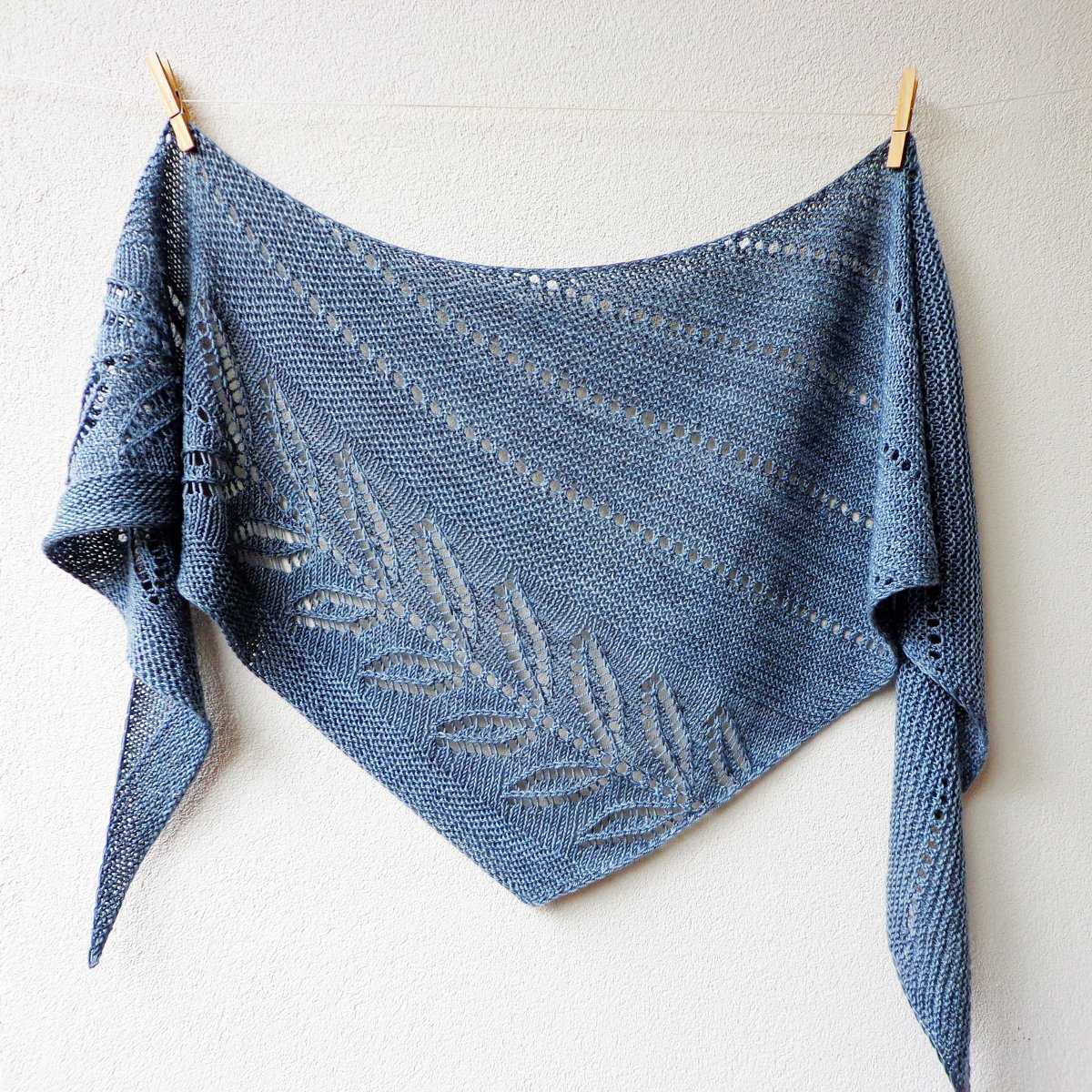
Whether you’re a seasoned knitter or just starting out, leaf shawls offer endless opportunities for creativity and personalization. Here are some project ideas and customizations to help you get inspired and make your leaf shawl truly one-of-a-kind.
Color Choices
Experimenting with different colors can completely transform the look of a leaf shawl. Consider using gradient yarns for a stunning ombre effect or combining complementary colors for a bold and vibrant design. You can also play with contrasting colors to highlight the intricate leaf motifs.
Leaf Variations
While leaf shawls typically feature a classic, symmetrical leaf motif, there are endless variations you can explore. For a more intricate look, you can try incorporating different leaf shapes and sizes or even experiment with adding additional foliage elements like flowers or vines.
Lace and Texture
Adding lace or texture to your leaf shawl can take it to the next level. Introduce lace panels between the leaf motifs to create a delicate and airy look. Alternatively, you can add texture by utilizing different stitch patterns, such as cables or bobbles, to give your shawl a unique and dimensional feel.
Size and Shape
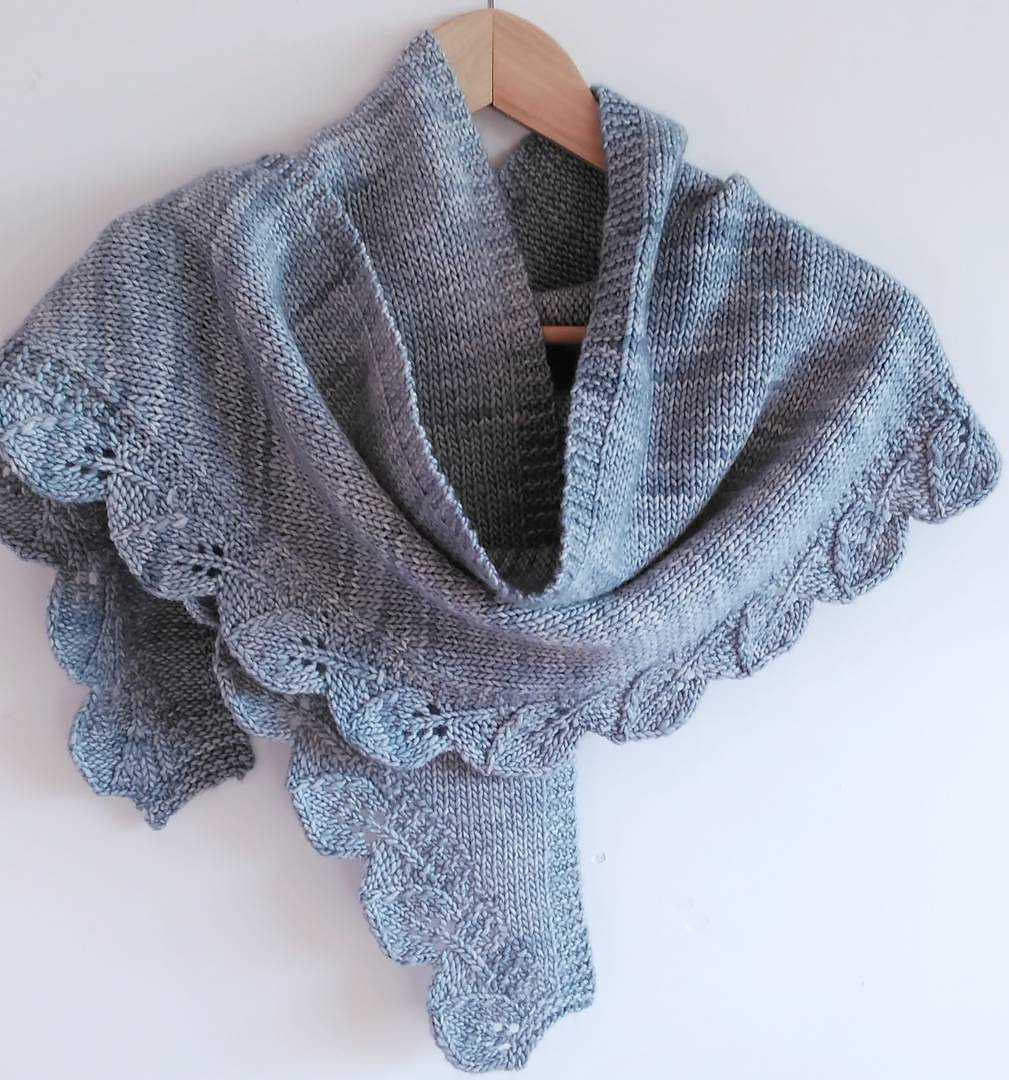
Leaf shawls lend themselves well to customization in terms of size and shape. You can adjust the number of leaf repeats to make a smaller or larger shawl, or even transform it into a cozy wrap or poncho. Experiment with different shaping techniques, such as crescent, triangular, or rectangular, to create a silhouette that suits your style.
Embellishments and Finishing Touches
To add a personal touch to your leaf shawl, consider embellishments and finishing touches. You can incorporate beads, sequins, or embroidery to accentuate the leaf motifs or add fringe or tassels for a playful and bohemian look. Don’t be afraid to get creative and make your leaf shawl truly unique.
Conclusion
A leaf shawl is more than just a knitting project – it’s an opportunity for self-expression and creativity. By experimenting with colors, leaf variations, lace and texture, size and shape, as well as embellishments, you can create a leaf shawl that reflects your personal style and becomes a cherished accessory in your wardrobe. So grab your knitting needles and let your imagination take flight with a leaf shawl project!
Q&A:
What is a leaf shawl knitting pattern?
A leaf shawl knitting pattern is a set of instructions that guide you in creating a shawl with leaf motifs. The pattern typically includes information on the type of yarn and needles to use, as well as detailed instructions for each stitch and shaping technique needed to complete the shawl.
Where can I find a leaf shawl knitting pattern?
You can find leaf shawl knitting patterns in various places. Some popular options include knitting books, online knitting pattern websites, and knitting magazines. Additionally, many independent designers share their patterns on platforms such as Ravelry.
Are leaf shawl knitting patterns suitable for beginners?
While leaf shawl knitting patterns can vary in complexity, some patterns may be better suited for intermediate or advanced knitters. However, there are also simpler leaf shawl patterns available that can be suitable for beginners who are familiar with basic knitting techniques.
Can I modify a leaf shawl knitting pattern?
Yes, you can modify a leaf shawl knitting pattern to fit your preferences. You can change the size of the shawl, add or remove leaf motifs, or even incorporate different stitches or colors. Just be sure to carefully read through the pattern and understand the construction before making any modifications.